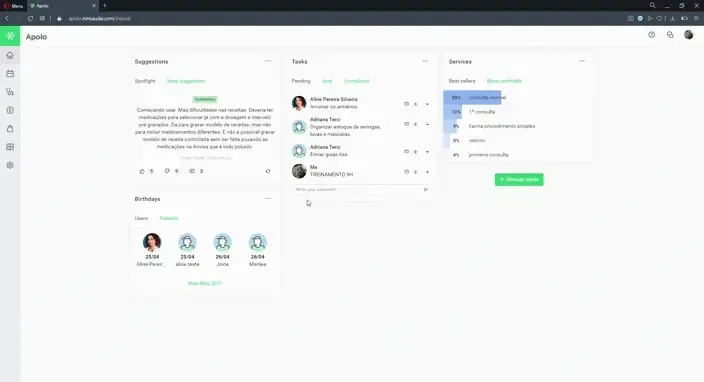Maintaining good communication with teammates is critical in any work environment. And when we talk about good communication, we are not just talking about how to relate, but the ability to send and receive messages clearly and objectively.
The larger the team, the greater the difficulty of communicating. This is because in places where there are a large number of people working, often some information can be lost during its transmission, or even become what we call a cordless phone.
You have certainly heard of it or maybe you have even played with the cordless phone in your childhood, right? This game consists of speaking a phrase in the ear of a colleague, and that colleague passes what he heard to another, and so the message goes through several people. The last person to receive the message must speak out loud about what they heard, and most of the time it ends up being something very different from the original message.
Unfortunately, in the workplace, this happens very often. The problem with this is that work is no joke, so information passed in the wrong way can harm not only the team but other outsiders who are involved. In clinics, for example, these injured people can be patients.

Good communication takes place when the message sent is received and understood by the interlocutor. For this to happen, it is important to align some points. With that in mind, here are some tips on how you can improve communication in the clinic, whether you are the manager, health professional, secretary, or receptionist.
Be clear in the words
This point is fundamental not only when it comes to teamwork in clinics but in any work environment. A message to be understood must have a beginning, middle, and end. If you want the team to carry out an activity, be clear and direct, do not go around. Don't expect people on your team to guess what you have in mind, being objective streamlines processes and everyone wins.
Know the right time to listen and speak
You certainly know that phrase "don't mess with the bed that isn't yours", right? It says a lot about situations experienced in work environments. Although it doesn't seem like it, abstaining from words is also part of the cycle that favors good communication.
Good communication takes place when both parties know when to listen and when to speak. Do not run over other people with your words is essential because before giving an opinion or talking about any subject, it is important to know what the other has to say. This leads us to another point: to understand a situation before giving an opinion on it. Think about it.

Establish different means of communication
There are different means of communication in society, and they can be written, sound, audiovisual, multimedia, and hypermedia. Some of the best known and most used today are letters (for formal matters), telephone, radio, TV, printed newspaper, news sites, e-mail, in short, everything that can bring news to people, even in different places.
Within work environments, including clinics, there must also be different ways of passing on information, because the more alternatives, the greater the chances of communication being effective. For this, you can use several methods: message boards in places with easy access for everyone involved, periodic meetings to announce important decisions, and a system for sending quick messages, among others.
Use management software
Management software can bring benefits in different sectors of the clinic, and with it, the communication between the team also becomes more efficient. Imagine that someone sent a message to the secretary, and the secretary, in turn, wrote it down on a post-it note that was pasted on the computer monitor. Hours passed and the paper went flying, and along with it, that information also left. With software, this would not happen.
Ninsaúde Apolo is a management software that brings several tools that help in the communication between the team in the clinic. Do you know the example above, about putting a piece of paper and it flying away? With Ninsaúde Apolo you would not have this problem, because on your home screen there is a wall of tasks. Activating the tool through a card, it is possible to write a message and direct it to a user. Whenever the user enters the system, on their home screen the task will be visible to them, and when they perform it, they can mark it as completed, delete it or add a comment.

At Ninsaúde Apolo users can also communicate more directly using the software's internal chat. This chat resembles instant messaging apps, like WhatsApp or Messenger, and unlike the task card, messages are private, meaning only the users involved have access to them. In the chat, it is also possible to use emojis, which makes the conversation lighter and more pleasant.

In the patient's registration, there is also the possibility to insert observations or warnings. These fields are important so that both the secretary and the health professional can record information that can be shared so that nothing will go unnoticed. Recalling that, Ninsaúde Apolo complies with the LGPD, therefore, confidential information that concerns only the patient is restricted only to the health professional, as mandated by law.

Another way to maintain good communication within Ninsaúde Apolo is through email marketing. In addition to being able to send messages to patients, it is also possible to program e-mails for users of the clinic's software or health professionals, simply by adding a sending filter. This tool can be used to send internal newsletters for example.
Did you like the tips? Keep following the blog to stay on top of more content like this. And if you are not yet a Ninsaúde Apolo user, contact us through the official website apolo.app and request a product demonstration.
